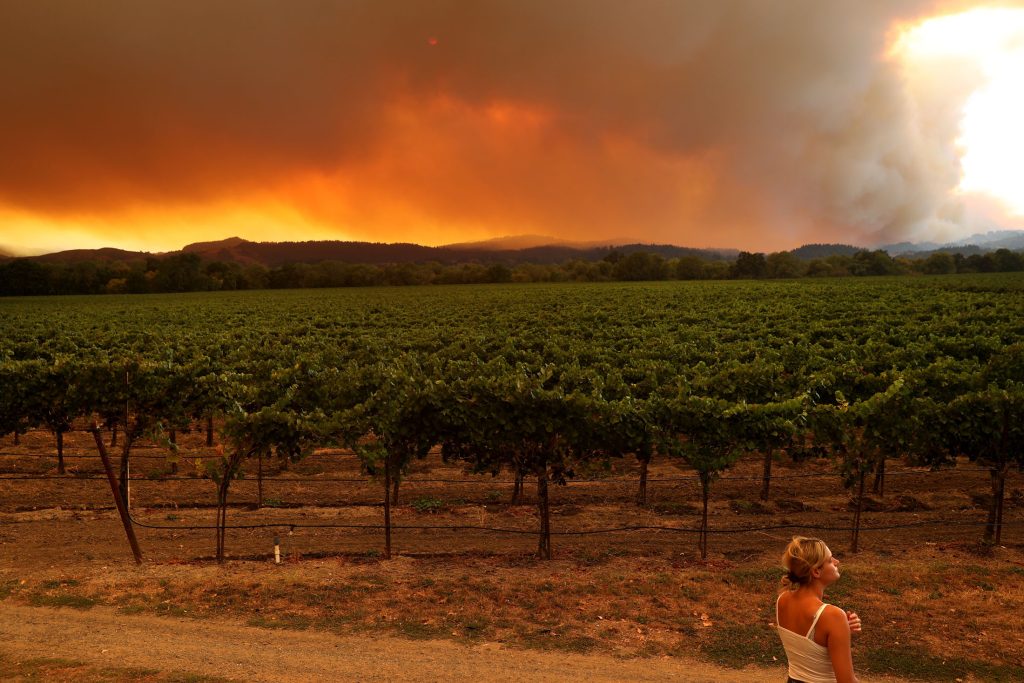
By: Tod Stewart
Bonnie and Clyde. Jekyll and Hyde. Bread and butter. Salt and pepper. Some things are so synonymous with something else that it’s almost impossible to mention one without the other. In the oenophilic world, it’s hard to mention Argentina without mentioning (or at least thinking about) malbec.
Personally, I can’t think of any other country whose vinous history is so inexorably linked to a single grape variety. (Okay, New Zealand and sauvignon blanc; I’ll give you that.) So important is malbec to Argentina’s wine industry that it accounts for almost 40 percent of all Argentine wine sold. And each year, April 17 is celebrated as Malbec World Day, a global initiative created by Wines Of Argentina (the organization responsible for, among other things, promoting the country’s wines) that seeks to position Argentine malbec as one of the most prominent varieties in the world.
First introduced in the mid-19th century, malbec vineyards in Argentina continue to expand, with close to 110,000 acres in the ground today.
When I visited Argentina a few years ago, I got a first-hand look at what progressive winemakers were doing in terms of technological improvements, vineyard site selection and viticultural and vinicultural practices. In other words, serious winemaking practices by dedicated, quality-oriented vintners. It wasn’t always like this.
“Until the late 1980s, Argentina was probably the worst wine producing country in the world,” admitted California vintner Paul Hobbs during an interview (and being careful not to mince words).” Having established a number of successful partnerships in California, Hobbs set out to prove to himself and the rest of the world that, when treated with respect, Argentine malbec could yield wines as good (and in the case of those from his Argentinian venture Viña Cabos, often better) than the best any country has to offer. The reason for the poor quality was simple: nobody really wanted to make anything better.
“Wine was strictly for consuming, not selling in bottle,” Hobbs maintained, “and for the most part it was all oxidized. There was really no concept of how to make good wine.”
Thanks in large part to the pioneering efforts of local winemaker Nicolás Catena, whose epiphany came while in Napa Valley (and who took inspiration from Robert Mondavi’s contribution to the wine scene there), the scene began to change. Hobbs experienced a similar epiphany on a road trip from Santiago, Chile, to Mendoza, Argentina, at about the same time that Argentina’s winemakers were starting to get serious.
“I saw what was possible,” he recounted. “There was a strong culture of wine, but a lack of practical knowledge. The vineyards were poorly farmed. The vines, especially for malbec, were over-irrigated, and in an effort to mitigate the threat of hail, trained far too low to the ground.”
However, he saw a strong work ethic in the people and the potential in the land to support a world-class wine industry. “What I saw,” he says, “was an unpainted canvas.” Transforming this canvas into a vinous Rembrandt has been, essentially, what Hobbs has been able to do.
While controlling yields and bringing more modern winemaking equipment and techniques to bear has certainly led to the continuing improvement in the overall quality of Argentina’s wines, perhaps the most significant factor behind the positive developments in the country’s wine industry hasn’t been so much about how to treat the fruit, but rather, where to plant the fruit. And as winemakers began to explore grape varieties beyond malbec, it has become apparent that they behave quite differently depending on where they are planted.
“In our case [site selection] is the most important thing,” admitted Germán di Césare, winemaker at Bodega Trivento. “The vineyard selection is critical because it is where the whole process begins. Each site provides different characteristics to the wine, so we plant according to the wine we want to produce.”
I also asked Gonzalo Bertelsen, general manager and chief winemaker at Mendoza’s Finca el Origen, who elaborated further:
“Every vineyard suits a particular vine and wine,” he told me. “And even within the same vineyard, we see big differences in how the vines behave depending on weather, grape variety, soil, rootstock, irrigation, canopy management, hang time, and so on.” He notes that merlot wines made from fruit grown in the eastern part of Mendoza are typically very different than those sourced from the region’s western part, which is 600 meters higher.”
In fact, elevation has turned out to be one of the most critical considerations in the critical process of vineyard location. The vines for Hobbs Viña Cobos wines are planted in numerous high-elevation vineyards throughout the Uco Valley and the department of Luján de Cuyo. The soils in these vineyards tend to be poor in organic material and blessed with deep layers of rock and mineral, as well as good drainage, resulting in fruit with concentration, structure and complexity.
“High-altitude vineyards provide a wide temperature range,” Di Césare confirmed, going on to explain that “low temperatures at night and higher temperatures during the day make for perfect conditions for the harvesting of perfectly ripened fruit.”
As alluded to a few paragraphs back, malbec might be the preferred weapon in most Argentinian winemakers’ arsenal. Still, plenty of other red and white varieties are being used with generally favorable results.
“We are sure that we can show there is much more Argentina can offer than just malbec,” Julián Iñarra Iraegui, commercial director for Proemio wines, told me. “The region we are in, Maipú, from my understanding, is the best region for growing cabernet sauvignon. We also make wines from petit verdot, syrah, grenache and cabernet franc.” Iraegui said that Proemio is looking to “deconstruct and reconstruct” classic French blends to craft wines that are both single varietal expressions and blends featuring those same grapes. He stated the winery’s style is “more French.”
“We avoid over-extraction and the heavy use of oak,” he said. “We import our barrels from France, and we are also using some barrels that are made from tree branches rather than trunks. We are the first winery to use these in Argentina.”
Tasting through a range of Proemio wines with Iraegui, I was impressed by the complexity, poise
and refinement of the wines crafted by French-thinking (though of Italian descent) Marcelo Bocardo. “Marcelo loves blends,” Iraegui revealed when asked whether malbec might be better as part of a blend than as a single varietal.
Though the winery makes a couple of 100 percent malbec wines, Iraegui said that the winery “loves cabernets.”
Indeed, the Proemio cabernet sauvignon “Reserve” 2016, with its aromas of tobacco, black currant, mint, pepper and dark plum, more than adequately showed the potential of this grape variety. Juicy and dense, it was nonetheless perfectly balanced and elegant, with a hint of spice intermingling with the chewy cassis fruit.
Just as Argentina isn’t solely about malbec, it’s also not strictly about vino tinto. Most of the main international white varietals (chardonnay, sauvignon blanc, viognier, semillon, chenin blanc and muscat) have taken root in the country’s soil. But the most interesting white variety is something unique to Argentina.
A cross between the Listán Prieto and Muscat of Alexandria varieties, Torrontés (or more precisely, Torrontés Riojano (there are three variations of the grape), gives white wines with intense aromatics and lively flavors (very much like a dry muscat…not surprisingly).
“Torrontés is a magnificent variety, with a high oenological value and [versatility] to obtain different wine types,” Susana Balbo of the Eponymous Winery explained to me. “In our case, we produce low-alcohol wines, natural sweet wines, dry wines, barrel fermented wines and late harvest wines from Torrontés grapes. Due to its great aromatic richness and its adaptability to diverse types of climate, Torrontés provides an interesting range of aromas that makes each wine unique.”
I’m not sure if the situation is different in the United States, but in Canada, the wines of Argentina have generally been relegated to the “cheap and cheerful” category, which isn’t really fair and certainly doesn’t allow consumers to experience what the country really has to offer, wine-wise. Sure, you can get perfectly acceptable wines for under $20 (that’s CDN, so apply the current conversion factor for USD). But I highly recommend springing for something a bit more upmarket. You’ll likely find that the flavor profile will increase dramatically even though the price will still be below that of wines from more recognized countries and regions.













